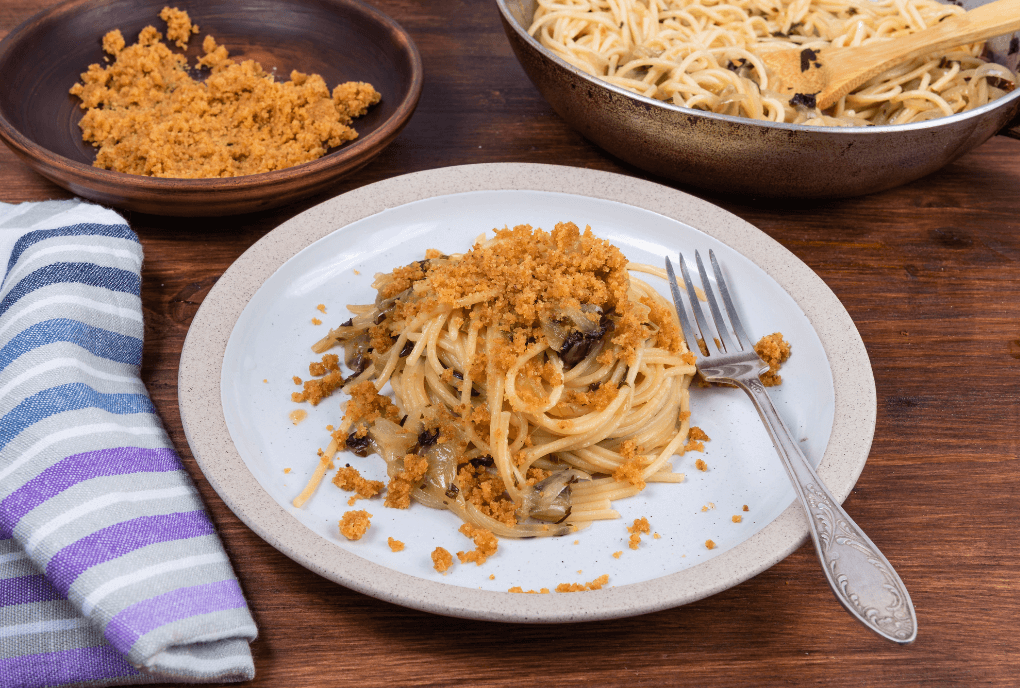
Food and wine tourism in Eastern Sicily: journey through Sicilian flavors
Sicily and all of Italy are popular destinations for tourists every year for history and culture. The island of the Bel Paese, in particular, also has to offer its visitors a vast culinary heritage rich in excellence. Among unique wines and flavors, we offer in this article an example of a food and wine itinerary to discover the typical products and dishes of eastern Sicily. Let’s get going!
Catania: local products, wines and traditions
For those visiting eastern Sicily, Catania is the perfect city from which to start the journey to discover the island’s typical cuisine. Between art and history, a must-see in the historic center is Piazza Bellini. Heart of Catania’s nightlife, one way to spend a warm summer evening is to enjoy a brioche with ice cream at
Comis Ice Cafe, also known for its specialty: coffee granita.
Not to be missed then absolutely is the star of the
street food from Catania: thearancino (with an o), breaded and fried, shaped like a cone to resemble nearby Mount Etna. But we also recommend trying the menu of Sirocco Sicilian Fish Lab. In the heart of the
in pischiria, you can taste some good fresh fish surrounded by Arabic and Mediterranean atmospheres. As the swordfish, freshly fried and served in traditional straw paper wrappers.
Queen of Sicilian cuisine is a first course in the culinary tradition of Catania: pasta alla norma. Named after Bellini’s opera, it is a strong-tasting dish with fresh tomatoes, basil, ricotta salata and fried eggplant. Typical of eastern Sicily, however, are the spaghetti alla carrettiera. The origin story of the carrittera pasta is related to the journeys that carters made from north to south of the island to transport goods. While traveling, they consumed products that keep longer such as oil and garlic, which, along with tomatoes, are the ingredients of this dish. To accompany these typical Sicilian dishes certainly goes very well with an excellent
wine from the wineries of Etna!
Turning to Catania’s confectionery tradition, this is linked to the cult of St. Agatha, the city’s patron saint. On the occasion of the holiday celebrated between February 3 and 5, they prepare the minnows of St. Agatha. Mini cassatas resemble in shape the breasts that were torn from the saint during her martyrdom. In fact, custom dictates that they are eaten by even numbers, just to remind them.
Linked to another episode in the Saint’s life is a perhaps lesser-known Catania confectionery product: the olivette. According to legend, while she was being brought to trial, the soil touched by the martyr’s foot began to grow an olive tree. Le aliveddi ri sant’Àjita are these olive-shaped treats made with flavored almond paste, typical of the first days of February. A must to taste these delicacies is the Nonna Vincenza’s pastry shop, at which to also enjoy the well-known artisanal Sicilian cannolo.
Having concluded the food and wine tour of Catania, we recommend one of the most fascinating wine routes in Eastern Sicily: the Etna wine road. There are wineries in the 20 municipalities of the province of Catania involved in wine tourism. Between winery visits and tasting of wines such as Etna doc, you can sample other local products including the Bronte pistachio. Among the food and wine excellences daughters of the well-known volcano, it is one of the main ingredients of traditional Sicilian sweet and savory dishes.
Syracuse: art, typical dishes and street food
But let’s get on with our tour! If you want to enjoy a food and wine experience in eastern Sicily under the banner of art and culture, Syracuse is the perfect destination. City in Magna Graecia, is famous for its Greek theater and archaeological sites. For a foretaste of the flavors of the Sicilian land, just stroll through the market on the island of Ortigia, the heart of the ancient polis.
Although Syracuse boasts a past of wealth and power, the basis of Syracuse cuisine is poor dishes, such as the ghiotta and the stimpirata. A dressing of carrots, potatoes, and olives repassed in oil and garlic is used to accompany meat and fish dishes. Above all, with the sweet and sour rabbit (or stimpirata style)., another typical Syracuse dish.
Representative of Syracuse’s gastronomic tradition is undoubtedly the fried pasta. With ancient origins and few ingredients, it is easily found in local food establishments. Made with long pasta, anchovies, oil and toasted breadcrumbs, it is definitely a dish to be accompanied with a glass of wine Nero d’Avola, typical of the province.
One of the most famous fish dishes is also inspired by poor cuisine: the matalotta. The name of French origin means fish stewed in wine. This dish with genuine flavors is nothing more than a fish soup flavored with tomatoes and capers.
But Syracuse is also known for street food. In addition to arancino, typical of street food are the scacce, small baked flatbreads stuffed with eggplant, tomato and sausage. To be tasted at the
Siculish strolling the streets of the island of Ortigia are also the cucche. Pasta strips stuffed with cheese and sausage are ideal to eat during a vacation in the Sicilian city along with the pastizzetti, dumplings filled with lamb meat sauce and rice.
Moving away from the city of the tyrant Dionysus, it is easy to come across the food and wine specialties of its province. For example, did you know that less than an hour from Syracuse is orange country? The location of Lentini is in fact surrounded by citrus groves where theRed Orange PGI. The town on the slopes of the Monti Iblei includes among its typical products the bread today Slow Food Presidium.
Moving inland from Syracuse, it is possible to taste the Hyblean honey of Sortino at the
farm Il Fusco. The nectar of the gods is used in the preparations of desserts such as the sanfuricchi (honey candies), the piretti (honey cookies with an almond inside) and the sfinci (fried yeast dough topped with honey) related to the feast of St. Joseph. If you want to taste these and other products, don’t miss October’s Honey Festival, an event with music and tastings in the city center. Otherwise you can taste these delicacies in total relaxation at the conclusion of a good lunch, accompanied by the moscato di Noto, today recognized as a D.O.C. wine.
A few kilometers from the city of Muscat is one of the most beautiful villages in the province of Syracuse: Marzamemi. Seaside city famous for traps, typical dishes arise from the fusion of Greek and Arab culture. Among the gastronomic excellences certainly stand out fish dishes, particularly of tuna, and the IGP cherry tomato from nearby Pachino.
Ragusa: unique flavors in the south of the island
Last stop on the food and wine tour to discover the flavors and typical dishes of eastern Sicily is Ragusa Ibla. Known as the “island within an island,” the Sicilian city is home to a vast historical, artistic and cultural heritage. An emblem of the rich and opulent Sicilian Baroque, Ragusan cuisine boasts a culinary heritage based on poor recipes.
Among these to definitely taste is the broad bean macco, legume-based soup excellent for warming cold winter days. Perhaps accompanied by a piece of ragusano cheese. Among the main courses, however, triumphs the lamb meat but also the rabbit alla pattuisa (alla cacciatora) and the tripe ragusana style.
Also to be included in the list of things to eat in Ragusa are the cucciddateddi. One pulls the other, they are cookies filled with dried figs, almonds, raisins, cinnamon, pine nuts and bitter cocoa. When accompanied by a good passito di Pantelleria, for example, are a good conclusion to a meal.
Walking through the streets of Ragusa, there are many grocery stores where these delicacies can be purchased. Among them, mandatory stop is the Delicatessen in Grocery., a fusion of a traditional grocery store and a 1970s-style restaurant.
But the province of Ragusa also includes the so-called city of lace: Modica. Surely, talking about the late baroque village without mentioning the chocolate Aztec-derived is impossible. But there are many delicacies to be enjoyed here such as the fresh pasta made strictly by hand, and a main course of sausage and sinapu (wild mustard). We suggest you try this specialty at The Merceria, where sandwiches made with local products are accompanied by drinks and spirits from the area.
When in Rome, do as the Romans do. Certainly Sicily fully represents this saying. Only a few kilometers apart, each town in the eastern part of the island offers typical dishes and products emblematic of the food and wine tourism that distinguishes this land.
by Annapasqua Logrieco





